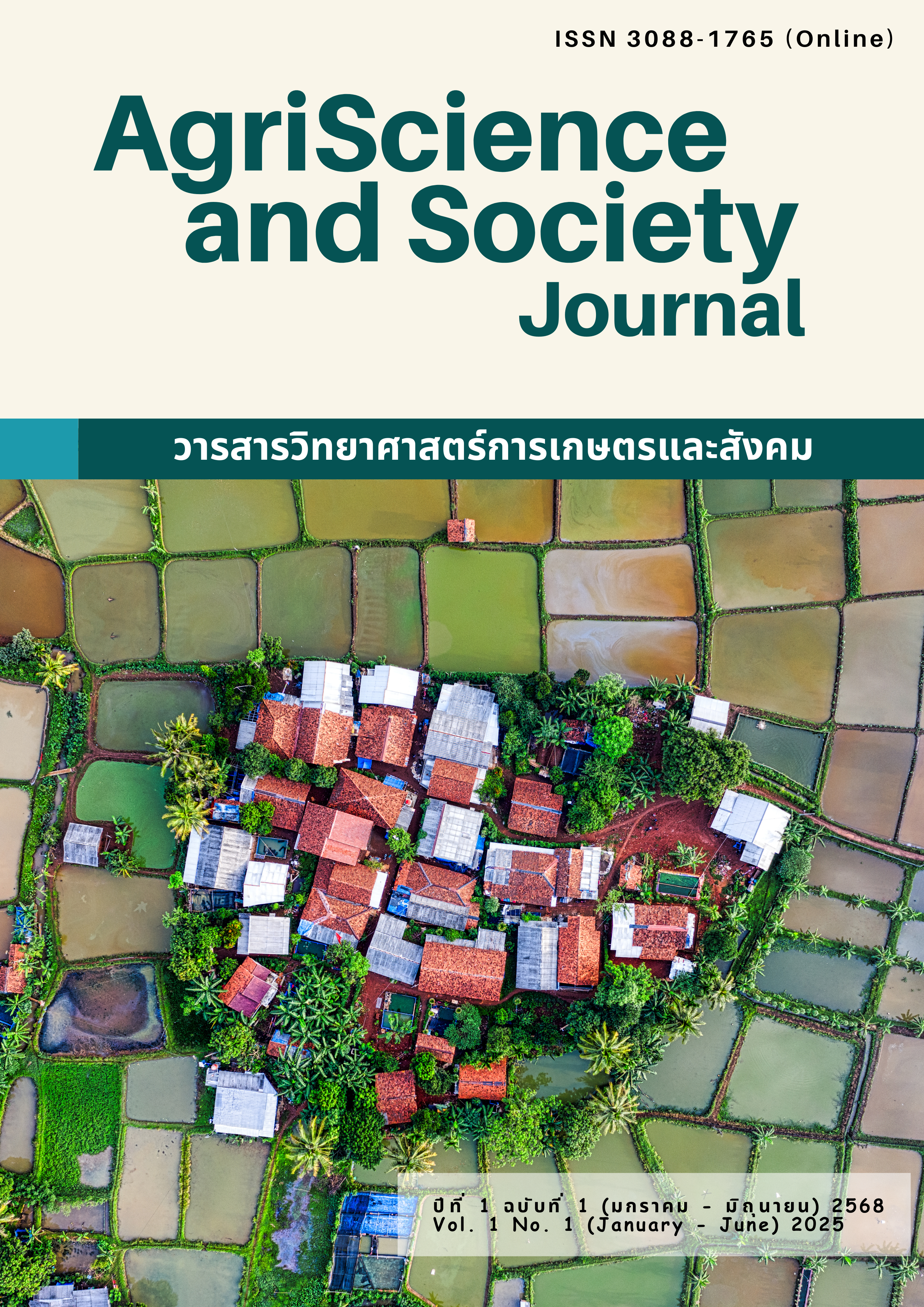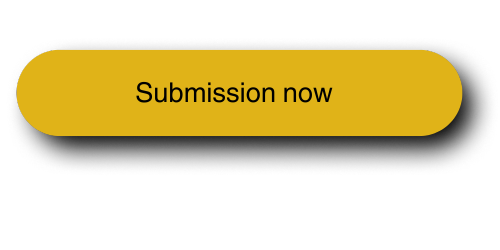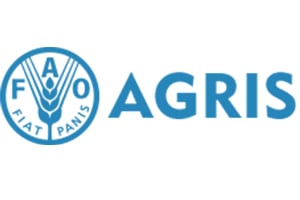การคัดเลือกไส้เดือนฝอยศัตรูแมลงสายพันธุ์ท้องถิ่นจากภาคใต้ของประเทศไทยเพื่อนำไปสู่การพัฒนาชีวภัณฑ์
คำสำคัญ:
ไส้เดือนฝอยศัตรูแมลง , ชีวภัณฑ์ไส้เดือนฝอยศัตรูแมลง , การควบคุมโดยชีววิธีบทคัดย่อ
ไส้เดือนฝอยศัตรูแมลงเป็นอีกหนึ่งชีววิธีที่ใช้ในการควบคุมแมลงศัตรูพืชหลายชนิดที่สำคัญ และมีความปลอดภัยต่อสิ่งมีชีวิตนอกเป้าหมายและสิ่งแวดล้อม การศึกษานี้มีวัตถุประสงค์เพื่อคัดเลือกไส้เดือนฝอยศัตรูแมลงในท้องถิ่นจากตัวอย่างดิน 4 จังหวัดในภาคใต้ พบว่าไส้เดือนฝอยศัตรูแมลงจากจังหวัดปัตตานี มีประสิทธิภาพสูงที่สุดในการเข้าทำลายหนอนกินรังผึ้ง โดยทำให้หนอนกินรังผึ้ง (Galleria mellonella) ที่เป็นเหยื่อล่อตาย 100% ในระยะเวลา 2 วัน ซึ่งจากซากหนอนที่ถูกเข้าทำลายรวมทั้งลักษณะทางสัณฐานวิทยาของไส้เดือนฝอยศัตรูแมลงภายใต้กล้องจุลทรรศน์และศึกษามอร์โฟเมตริก ทำให้ระบุไส้เดือนฝอยระดับสกุลได้คือ Heterorhabditis sp. และเมื่อนำไส้เดือนฝอยศัตรูแมลงดังกล่าวมาพัฒนาเป็นชีวภัณฑ์ไส้เดือนฝอยศัตรูแมลง โดยประเมินการละลายผลิตภัณฑ์ ความมีชีวิตรอดของไส้เดือนฝอยศัตรูแมลง และความสามารถในการเข้าทำลายหนอนกินรังผึ้ง ทำให้ได้ชนิดส่วนผสมที่เหมาะสมในการผลิตเป็นชีวิธีภัณฑ์ไส้เดือนฝอยศัตรูแมลง ตามการวางแผนการทดลอง Plackett−Burman design ได้แก่ kaolin, tween20, CMC, formalin และ sodium polyacrylate นำส่วนผสมดังกล่าวไปหาอัตราส่วนที่เหมาะสมด้วยวิธี mixture design เพื่อพัฒนาเป็นสูตรสำเร็จต่อไป
เอกสารอ้างอิง
Adams, B.J., and Nguyen, K.B. (2002). Taxonomy and systematics of the genus Heterorhabditis. Nematology, 4, 26–54.
Alekseev, E., Glazer, I., and Samish, M. (2006). Effect of soil texture and moisture on the activity of entomopathogenic nematodes against female Boophilus annulatus Ticks. BioControl, 51, 507–518. https://doi.org/10.1007/s10526-005-2935-9
Ansari, M. Hussain, M.A., and Moens, M. (2009). Formulation and application of entomopathogenic nematode-infected cadavers for control of Hoplia philanthus in turfgrass. Pest Management Science, 65, 367–374. https://doi.org/10.1002/ps.1699
Ardpairin, J., Muangpat, P., Sonpom, S., Dumidae, A., Subkrasae, C., Tandhavanant, S., Thanwisai A. and Vitta, A. (2020). A survey of entomopathogenic nematodes and their symbiotic bacteria in agricultural areas of northern Thailand. Journal of Helminthology, 94, e192. https://doi.org/10.1017/S0022149X20000735
Bamel, V., Sirohi, A., and Sabir, N. (2021). Survival and infectivity of entomopathogenic nematode Heterorhabditis indica Poinar, Karunakar & David incubated in solutions containing different spray adjuvants. Journal of Entomology and Zoology Studies, 9, 794–799.
Cimen, H. (2023). The role of Photorhabdus-induced bioluminescence and red cadaver coloration on the deterrence of insect scavengers from entomopathogenic nematode-infected cadavers. Journal of Invertebrate Pathology, 196, 107871. https://doi.org/10.1016/j.jip.2022.107871
Consabo, L., Pillada, E.M.G., Gallego, A.M. and Panaligan, A.C.G. (2025). Occurrence, isolation, and identification to genus level of entomopathogenic nematodes (epns) in Central Panay Island, Philippines. International Journal of Agricultural Technology, 21, 603–616. https://doi.org/10.63369/ijat.2025.21.2.603-616
Cruz-Martínez, H., Ruiz-Vega, J., Matadamas-Ortíz, P.T., Cortés-Martínez, C.I. and Rosas-Diaz, J. (2017). Formulation of entomopathogenic nematodes for crop pest control–a review. Plant Protection Science, 53, 15. https://doi.org/10.17221/35/2016-PPS
Dziegielewska, M. and Skwiercz, A. (2018). The influence of selected abiotic factors on the occurrence of entomopathogenic nematodes (Steinernematidae, Heterorhabditidae) in soil. Polish Journal of Soil Science, 51. https://doi.org/10.17951/pjss/2018.51.1.11
Fallet, P., Bazagwira, D., Guenat, J. M., Bustos-Segura, C., Karangwa, P., Mukundwa, I. P., Kajuga, J., Degen, T., Toepfer, S., and Turlings, T.C.J. (2022). Laboratory and field trials reveal the potential of a gel formulation of entomopathogenic nematodes for the biological control of fall armyworm caterpillars (Spodoptera frugiperda). Biological Control, 176, 105086. https://doi.org/10.1016/j.biocontrol.2022.105086
Glazer, I., and Lewis, E.E. (2000). Bioassays for entomopathogenic nematodes. In: Navon, A. and Ascher, K.R.S. (Eds.). Bioassays of Entomopathogenic Microbes and Nematodes. CABI Publishing, Wallingford, UK, pp. 229–247.
Hazir, S., Kaya, H., Touray, M., Cimen, H., and Ilan, D.S. (2022). Basic laboratory and field manual for conducting research with the entomopathogenic nematodes, Steinernema and Heterorhabditis, and their bacterial symbionts. Turkish Journal of Zoology, 46, 305–350. https://doi.org/10.55730/1300-0179.3085
Hiltpold, I. (2015). Prospects in the application technology and formulation of entomopathogenic nematodes for biological control of insect pests. Nematology, 17, 499–507. https://doi.org/10.1007/978-3-319-18266-7_7
Hominick, W.M., Briscoe, B.R., del Pino, F.G., Heng, J., Hunt, D.J., Kozodoy, E., Mracek, Z., Nguyen, K.B., Reid, A.P., Spiridonov, S., Stock, P., Sturhan, D., Waturu, C., and Yoshida, M. (1997). Biosystematics of entomopathogenic nematodes. Journal of Helminthology, 71, 271–298. https://doi.org/10.1017/S0022149X00016096
Husain, M., Rasool, K.G., Sutanto, K.D., Omer, A.O., Tufail, M., and Aldawood, A.S. (2024). Laboratory evaluation of indigenous and commercial entomopathogenic nematodes against red palm weevil, Rhynchophorus ferrugineus (Coleoptera: Curculionidae). Insects, 15, 290. https://doi.org/10.3390/insects15040290
Kagimu, N., Ferreira, T., and Malan, A.P. (2017). The attributes of survival in the formulation of entomopathogenic nematodes utilised as insect biocontrol agents. African Entomology, 25, 275–291. https://hdl.handle.net/10520/EJC-9e1e16147
Kary, N.E., Chahardoli, S., Mohammadi, D., and Dillon, A.B. (2021). Efficacy of carboxymethyl cellulose as an inert water-soluble carrier for formulation of entomopathogenic nematodes, Heterorhabditis bacteriophora and Steinernema carpocapsae. Biological Control, 160, 104690. https://doi.org/10.1016/j.biocontrol.2021.104690
Kaur, S., Thakur, N., and Yadav, A.N. (2024). Evaluation of different mass production techniques to enhance the progeny of isolated indigenous entomopathogenic nematodes from Indian Himalayan region. National Academy Science Letters, 1–6. https://doi.org/10.1007/s40009-024-01506-0
Kaya, H.K., and Stock, S.P. (1997). Techniques in insect nematology. Manual of Techniques in Insect Pathology, 281-324 https://doi.org/10.1016/B978-012432555-5/50016-6
Lewis, E.E., Campbell, J., Griffin, C., Kaya, H., and Peters, A. (2006). Behavioral ecology of entomopathogenic nematodes. Biological Control, 38, 66–79. https://doi.org/10.1016/j.biocontrol.2005.11.007
Lucskai, A. (1999). Identified key to entomopathogenic nematode species. Acta phytopathologica et entomologica hungarica, 34, 317–325. https://doi.org/10.1556/aphyt.34.1999.4.7
Martinez, H.C., Ruiz-Vega, J., Matadamas-Ortíz, P.T., Martínez, C.I.C., and Diaz, J.R. (2017). Formulation of entomopathogenic nematodes for crop pest control: A review. Plant Protection Science, 53, 15–24. https://doi.org/10.17221/35/2016-PPS
Nimkingrat, P., Siri, N., and Chadamek, C. (2014). Efficacy of the entomopathogenic nematodes against whiteflies, Bemisia tabaci (Homoptera: Aleyrodidae), in chili peppers under laboratory and field conditions. Khon Kaen Agriculture Journal, 42, 255–264.
Nguyen, K.B. and Smart, Jr. G.C. (1996). Identification of entomopathogenic Nematode in the Steinernema and Heterorhabditidae (nemata: Rhabditida). Journal of Nematology, 28, 286–300.
Nguyen, K.B., and Hunt, D.J. (2007). Entomopathogenic nematodes: systematics, phylogeny and bacterial symbionts. Nematology Monographs, 5, 1–816.
Noosidum, A., Hodson, A.K., Lewis, E.E., and Chandrapatva, A. (2010). Characterization of new entomopathogenic nematodes from Thailand: Foraging behavior and virulence to the greater wax moth, Galleria mellonella L. (Lepidoptera: Pyralidae). Journal of Nematology, 42, 281–291.
Noosidum, A., Chandrapatya, A., and Lewis E.E. (2016). An important method for entomopathogenic nematode application to control diamondback moth, Plutella xylostella L. (Lepidoptera: Plutellidae) and common cutworm, Spodoptera litura F. (Lepidoptera: Noctuidae) larvae in vegetable crops. Available from:
https://digital.library.tu.ac.th/tu_dc/digital/api/DownloadDigitalFile/dowload/64578 [accessed 24 November 2024]
Office of Science for Land Development. (2004). Methods of soil analysis and interpretation for soil survey and classification: Physical Properties. Available from:
http://www1.ldd.go.th/WEB_PSD/pdf/expert%20work/ex22/3-3.pdf [accessed 21 December 2024]
Onwong, R., Khwanket, N., Rattanawannee, A., Rajchanuwong, P., and Noosidum, A. (2021). Molecular identification of entomopathogenic nematodes of the Genus Heterorhabditisin Thailand and pathogenicity to larvae of the greater wax moth, Galleria mellonella L. (Lepidoptera: Pyralidae). Khon Kaen Agriculture Journal, 49, 1583–1586.
Orozco, A.R., Lee, M., and Stock, S.P. (2014). Soil sampling and isolation of entomopathogenic nematodes (Steinernematidae, Heterorhabditidae). Journal of Visualized Experiments, 89, 52083. https://doi.org/10.3791/52083
Plackett, R.L., and Burman, J.P. (1946). The design of optimum multifactorial experiments. Biometrika, 33, 305–325. https://doi.org/10.2307/2332195
Poinar, G.O.Jr. (1990). Taxonomy and biology of Heterorhabditidae and Steinernematidae. In Kaya, H.K. and Guagler, R. (Eds.). Entomopathogenic Nematodes in Biological Control. CRC Press. Boca Raton. Florida, USA. page 42. https://doi.org/10.1201/9781351071741
Sharmila, R., Priya, M.S., Subramanian, S., Poornima, K., and Pandiyan, M. (2018). Review on ecology of entomopathogenic nematodes. Journal of Entomology and Zoology Studies, 6, 1086–1093.
Stock, S.P. and Kaya, H.K. (1996). A multivariate analysis of morphometric characters of Heterorhabditis species. Journal of Parasitology, 82, 806–813. https://doi.org/10.2307/3283895
Tangchitsomkid, N., and Kositcharoenkul, N. (2013). Taxonomy of Steinernema and Heterorhabditis. Availability from: https://www.doa.go.th/research/attachment.php?aid=2004 [accessed on 24 November 2024]
White, G.F. (1927). A method for obtaining infective nematode larvae from cultures. Science, 66, 302–303. https://doi.org/10.1126/science.66.1709.302.b
Wu, S., Li, Y., Toews, M. D., Mbata, G., and D. I. Shapiro-Ilan. (2023). Novel formulations improve the environmental tolerance of entomopathogenic nematodes. Biological Control, 186, 105329. https://doi.org/10.1016/j.biocontrol.2023.105329
Yooyangket, T., Muangpat, P., Polseela, R., Tandhavanant, S., Thanwisai, A. and Vitta, A. (2018). Identification of entomopathogenic nematodes and symbiotic bacteria from Nam Nao National Park in Thailand and larvicidal activity of symbiotic bacteria against Aedes aegypti and Aedes albopictus. PloS One, 13, e0195681. https://doi.org/10.1371/journal.pone.0195681
ดาวน์โหลด
เผยแพร่แล้ว
รูปแบบการอ้างอิง
ฉบับ
ประเภทบทความ
สัญญาอนุญาต
ลิขสิทธิ์ (c) 2025 Natural Resources

อนุญาตภายใต้เงื่อนไข Creative Commons Attribution-NonCommercial-NoDerivatives 4.0 International License.
วารสารทรัพยากรธรรมชาติและวิทยาศาสตร์การเกษตร อยู่ภายใต้การอนุญาต Creative Commons Attribution-NonCommercial-NoDerivatives 4.0 International (CC BY-NC-ND 4.0) เว้นแต่จะระบุไว้เป็นอย่างอื่น โปรดอ่านหน้านโยบายของเราสำหรับข้อมูลเพิ่มเติมเกี่ยวกับการเข้าถึงแบบเปิด ลิขสิทธิ์ และการอนุญาต






